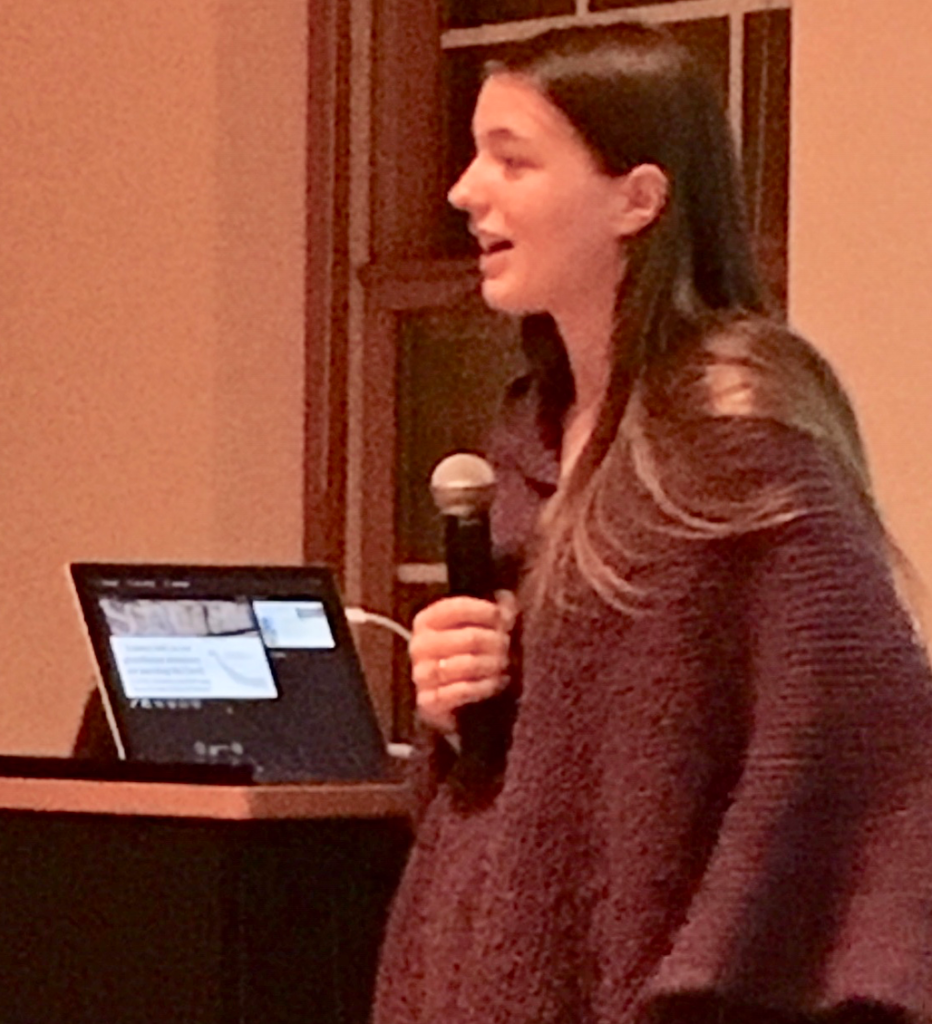
“We will not put down our signs and go back to school until you act to stop fossil fuel emissions. Giving up is not an option.â€
            Kallan Benson, at the Champions of the Earth award ceremony
           A group of young people is forcing us to face what many politicians and other adults are trying to ignore. Greta Thunberg (the 16 year old Swedish girl) has drawn global attention to the climate crisis, an existential threat.
           Earlier this month I listened in awe to one of these young activists. Kallan Benson is 15 years old and already an accomplished public speaker. She is a Quaker and continues the long history of social activism by members of the Religious Society of Friends. Her mother, a marine scientist, accompanied her since Kallan is too young to drive. Wearing a brown ruana and standing without a hint of nervousness, she addressed the environmental group I am active in, Quaker Earthcare Witness.
           Kallan is a leader of Fridays for Future, started by Greta. Remember that Greta skipped school to sit outside the Swedish Parliament building every Friday to raise awareness of the climate crisis. Since then she has inspired young people around the globe to express their concern for planetary changes. She has also tried to inspire older people at the United Nations and the United States Congress, with limited success,
           When she was 9, Kallan walked in the 2019 People’s Climate March in New York City. She wrote: “During that march, I evolved from concerned kid to a committed activist.†The next step in her commitment was to give other kids, many of whom couldn’t go to a climate demonstration, the opportunity to express their concern. She painted a giant monarch butterfly on a huge play parachute, which was then signed and decorated by over 1600 kids. This colorful statement flew down Pennsylvania Avenue and around the White House.
           Not satisfied with just working in this country, Kallan catalyzed the formation of Parachutes for the Planet, an international art initiative. More than 900 colorful parachutes have been created by children from all over the world; many of them decorated the National Mall in D.C. last year.
           Recently Kallan joined other young people at a ceremony in New York City. She stood in for Greta Thunberg, who couldn’t attend, to receive the Champions of the Earth award for starting Fridays for Future. “Champions†is the most prestigious environmental award of the United Nations. Other award winners include the country of Costa Rica (for its policy leadership in protecting its environment) and Dr. Katharine Hayhoe (who appeared by video in Durango last year at the Climate Change Solutions Symposium).
           Kallan appeared a little nervous and occasionally angry on the YouTube video of her speech. She started by saying: “Awards are for celebrating achievements, but the achievement we seek has not occurred. The world is in climate crisis and actions of the United Nations are failing to stop it…. We understand that the Champions of the Earth Award is a great honor, but we cannot accept it. Instead we offer to hold it for you to earn. You at the United Nations hold the power to save humanity from itself. You must act in time to become the real champions of the Earth.†It was amazing to see the United Nations being chastised by a teenager—and with good reason!
           Kallan and Greta are not alone. The organization Fridays for Future is just over a year old, but already has members in 30 countries. In addition to supporting students who strike (stay away from school) on Fridays, they have organized several large demonstrations. The largest was on September 20th when it was observed in 150 countries, with an estimated 4 million participating. My wife and I joined the group in Durango, organized by a Fort Lewis College student. After school let out the sidewalk in front of City Hall was crowded with students.
           Two weeks ago Greta was in Denver, just one of the speakers at a rally attended by over 7000 people. Perhaps the youngest person to speak then was just 13 years old. Haven Coleman has been striking since January. She said that it gets lonely, and was glad to be surrounded by so many people at the demonstration. These kids are amazing!
           I’ll end with what Kallan said close to the end of her talk: “Every Friday we invite all people of conscience to climate strike.†I hope to see you there!
© Richard Grossman MD, 2019
